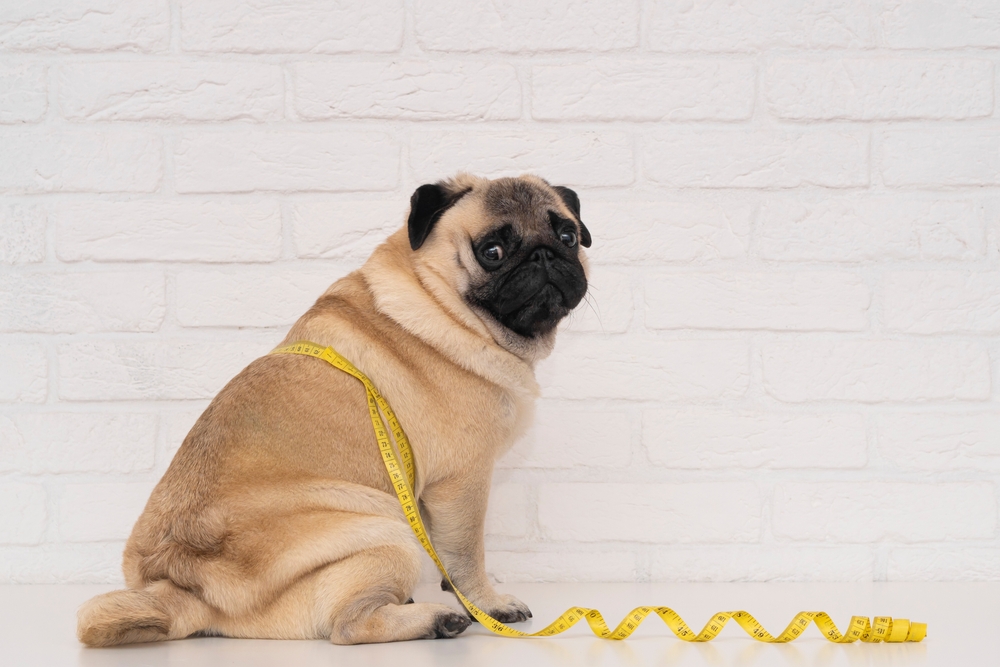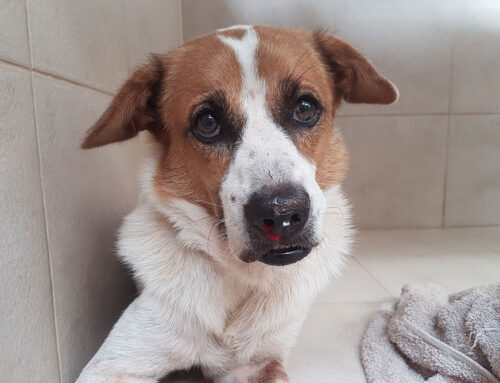You may be thinking, “Why do I need to choose the right exercise for my dog? They’re all dogs, aren’t they?” You’re not wrong, and you’re certainly not alone. However, North Waterloo Veterinary Hospital knows that every dog is unique, and so are their exercise needs.
Whether you have a laid-back basset hound or an energetic border collie, it’s essential that you find the best way to keep them active and healthy. Understanding your dog’s specific requirements and limitations will help you tailor a fitness routine that keeps them happy and healthy.
Your dog’s conformation
“Conformation” is a fancy word for your dog’s build that refers to a dog’s physical structure, including skeletal framework, muscle distribution, and body proportions. This aspect of a dog’s biology determines their most suitable exercise types and intensity.
For example, small breeds like Chihuahuas and pugs require different exercises than larger breeds such as Great Danes and mastiffs. Smaller dogs often have delicate frames and are genetically prone to luxating patellas, so they may not tolerate long periods of strenuous activity. On the other hand, larger dogs may have more endurance, but are often more prone to issues like hip dysplasia, especially if over-exercised.
Low-impact exercise breeds
Dogs with shorter legs and heavier bodies are generally less agile and may struggle with strenuous activities that could stress their joints and spine. Breeds like bulldogs, basset hounds, and dachshunds fall into this category and do better with gentle, low-impact activities. Because of their specific conformation, overexertion can lead to more injuries, arthritis, and spinal problems.
- Recommendation — Short walks, gentle play, and swimming can be ideal forms of exercise, but never underestimate a good ol’ round of hide and seek.
High-impact exercise breeds
Breeds like border collies, German shepherds, and Labrador retrievers thrive on high-impact activities. They typically have the energy and conformation for more rigorous exercise routines. However, despite their physical advantages, these breeds can still be prone to injuries like ligament tears and hip dysplasia if not exercised properly. Always start slowly and build intensity to prevent overuse injuries.
- Recommendation — These dogs’ strong bodies and longer legs make them more suitable for running and hiking. But, don’t forget the occasional fun game of “Catch me if you can!”
Lean and athletic dog breeds
Dogs with a lean, athletic build, such as greyhounds and whippets, are naturally built for speed and agility. High-impact activities are ideal, provided they’re introduced gradually to prevent injuries. And, despite their physical advantages, athletic breeds can still be prone to injuries like ligament tears or muscle strains if not exercised properly.
- Recommendation — High-impact activities like running and agility training are ideal, but you also can’t go wrong with a classic game of fetch.
How to tell if your dog is tired
Over-exercised dogs, regardless of their breed, can suffer from fatigue-related injuries, so you must understand when your dog has had enough exercise. Always monitor their behavior, allow ample rest periods, ensure they have plenty of water, and adjust their routine, as needed. The following signs can indicate the exercise is too intense or not suitable for their conformation.
– Excessive panting and drooling
– Increased thirst
– Slowing down
– Reluctance to continue
– Stiffness or limping
– Lying down frequently
– Reduced interest in play
– Uncoordinated movements
– Whining or whimpering
Your pet’s body condition score

The body condition score (BCS) is a valuable tool for determining whether your dog is at a healthy weight. The tool involves assessing your dog’s overall physique and can guide you in adjusting their exercise routine.
- BCS score — A BCS score of four to five out of nine is ideal for most dogs.
- BCS conformation — You should be able to feel your dog’s ribs without excess fat covering, and their waist should be visible from above.
Maintaining a healthy BCS reduces the risk of joint problems and other obesity-related health issues. Overweight dogs are also at higher risk for injuries, so balancing diet and exercise is vital.
Every dog has unique exercise needs based on their breed, conformation, and overall health. Help your dog enjoy a happy, active lifestyle by selecting appropriate activities and being mindful of their limits. If you have concerns about your dog’s exercise routine or health, call or schedule a consult with the knowledgeable team at North Waterloo Veterinary Hospital. Because here, they’re family.







Leave A Comment